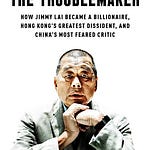I’ve noticed that most Hong Kong immigrants lean center-right, often finding Canadian progressivism too extreme for their tastes. Some are eager to change their circumstances through the ballot box but feel that, as a minority, our influence is limited.
The Progressives
Before discussing what Hong Kongers in Canada can do, let’s delve into the roots of Canadian progressivism.
The political spectrum in Canada began to shift during the Great Depression and World War II. The Co-operative Commonwealth Federation (CCF), a socialist party founded in 1932, played a key role in advocating for progressive policies like old-age security, unemployment insurance, and Medicare.
The rise of the CCF prompted the Liberal government under Mackenzie King to co-opt many of its ideas to maintain political power. The Liberal Party’s approach to the CCF, often described as "brokerage politics," involved adopting centrist policies and building broad coalitions to appeal to the median Canadian voter.
The CCF, later renamed the New Democratic Party (NDP), continued pushing for structural changes aimed at reducing inequality and expanding public services. Tommy Douglas, premier of Saskatchewan and later the NDP's leader, pioneered universal healthcare in the province, which eventually became the model for Canada's national healthcare system.
The Quiet Revolution in Quebec during the 1960s and 1970s was another pivotal moment. This period saw rapid modernization and secularization, led by the Quebec Liberal Party. It brought sweeping reforms in education, healthcare, and social services, along with a renewed emphasis on the French language and culture. It also fueled a rise in Quebec nationalism and a desire for greater autonomy within Canada.
Justin Trudeau's Liberal government, elected in 2015, represents a recent progressive turn. Trudeau expanded welfare programs, legalized marijuana, increased child benefit funding, introduced a national carbon tax, and pursued policies focused on reducing poverty and promoting equality. His administration is often regarded as "the most left-wing government in Canada’s history."
The Conservatives
Can the opposite of the progressives be the answer? The Canadian Conservative Party once called itself the "Progressive Conservative" party—an apparent oxymoron.
Historically, Canadian conservatism has its roots in British Toryism—a philosophy that initially supported a significant role for government, particularly in economic matters. Early Canadian conservatism was far from the small-government, free-market approach often linked to conservatism elsewhere. Instead, it embraced an interventionist state, focused on nation-building through ambitious infrastructure projects designed to promote growth and national unity. Canada's first Prime Minister, John A. Macdonald, exemplified this with the construction of the Canadian Pacific Railway—a massive undertaking that connected the country from coast to coast, not only physically but also politically and economically.
Similarly, during the Great Depression, Conservative Prime Minister R.B. Bennett introduced unemployment relief at a time when such measures were almost unheard of, demonstrating an openness to state intervention.
Another defining feature of Canadian conservatism has been an emphasis on sovereignty and autonomy from international pressures. During the Cold War, Conservative leader John Diefenbaker resisted American demands to place nuclear missiles on Canadian soil, underscoring the party's stance on maintaining independence.
Canadian conservatism took a dramatic turn in the 1980s under the leadership of Brian Mulroney. Mulroney championed free trade and privatization, moving away from the interventionist policies of earlier Conservative leaders. Privatizing crown corporations such as Air Canada and Petro-Canada marked a shift towards a more free-market ideology, aligning more closely with the conservative waves led by Ronald Reagan in the United States and Margaret Thatcher in the United Kingdom.
Mulroney’s economic liberalization was politically contentious, marking a significant transformation within Canadian conservatism. Around the same time, social issues like LGBTQ rights and abortion began to take center stage, creating divisions within the Conservative Party.
The 1990s were challenging for the Conservatives, as they struggled with internal divisions after Mulroney's economic reforms. This created space for the emergence of the Reform Party, which appealed to Western Canadians disillusioned with the political status quo. The Reform Party’s focus on smaller government and regional representation eventually led to the formation of the Canadian Alliance in 2000, which then merged with the remnants of the Progressive Conservatives in 2003, forming today’s Conservative Party of Canada.
The unified Conservative movement brought together diverse strands of conservatism, setting the stage for Stephen Harper’s leadership. Harper navigated this complex ideological landscape with caution, particularly regarding divisive social issues. Notably, he chose not to reopen the abortion debate, understanding the risk of alienating parts of his voter base.
Meanwhile, Canada, especially Quebec, has undergone significant secularization since the 1960s. The secularization of the education system, particularly in Quebec, has diminished the influence of religious institutions in shaping public values. Regular church attendance in Canada dropped from around 40% in the 1980s to about 20% by 2015, correlating with more progressive attitudes on social issues.
Economy and Demography
In short, what we see as progressivism is deeply entrenched. However, Canada is also blessed. There are very few nations on Earth that enjoy the kind of abundance in natural resources that Canada does.
Canada's energy profile is unique in its diversity and capacity. The country has the extraordinary luxury of meeting its domestic energy needs largely through renewable sources like hydropower, along with an established and reliable nuclear sector, while also benefiting economically from its vast reserves of oil sands and natural gas. This gives Canada a distinct advantage: the ability to rely on clean and sustainable energy sources for its domestic consumption while exporting fossil fuels, primarily to the United States, where demand remains high. The result is a rare blend of energy self-sufficiency and lucrative export opportunities—a combination that most countries can only dream of.
However, Canada’s wealth in natural resources—from timber to hydropower to oil sands—while a source of economic stability, also carries inherent risks. Chief among them is the risk of complacency, a phenomenon commonly referred to as the "resource curse." This paradox occurs when countries rich in natural resources fail to diversify their economies, leading to an overreliance on resource extraction at the expense of other sectors.
To diversify its economy, what Canada needs above all else is talent. Nations worldwide are fiercely competing to attract top talent, recognizing that a skilled workforce is crucial to driving technological advancement and economic resilience. Canada’s challenge is not a lack of appeal. The country is widely regarded as a desirable destination, offering a high quality of life, political stability, and a welcoming multicultural society. For many skilled professionals around the world, Canada represents an attractive option for building a future. Yet, despite this allure, Canada often struggles to fully capitalize on its ability to attract and, more importantly, retain the very talent it needs.
One of the most significant barriers is the mismatch between Canada’s open-door immigration policy and the underwhelming outcomes many immigrants face upon arrival. Canada attracts highly educated and experienced individuals, but too often these professionals find themselves underemployed due to systemic barriers in the labor market. Credential recognition remains a substantial hurdle, particularly in regulated professions such as healthcare, engineering, and education.
The challenge also extends to the private sector. While Canada has a robust public sector and a thriving resource economy, its startup ecosystem and technology sectors lag behind those of the United States and other global innovation hubs. A combination of high taxes, a risk-averse investment culture, and regulatory hurdles makes it difficult for many tech startups to scale, leading to a loss of entrepreneurial talent. Canada produces brilliant minds in its universities, but without a supportive infrastructure for startups and tech innovation, many of these individuals either leave or never get the opportunity to maximize their potential.
Another contributing factor is Canada’s approach to talent development. The country has made considerable investments in higher education, and Canadian universities consistently rank among the best globally. However, there is a disconnect between academic training and the demands of the job market. Graduates often emerge with skills that do not fully align with current labor needs, particularly in high-growth areas like artificial intelligence, cybersecurity, and data analytics. This skills gap means that despite having a pool of educated individuals, employers often struggle to find the specific expertise they require, leading to both unemployment and unfilled job vacancies.
Immigration has long been a cornerstone of Canada's growth strategy. However, recent surveys reveal a notable shift in Canadian attitudes towards immigration. According to the Fall 2024 Environics Institute survey, 58% of Canadians now believe the country accepts too many immigrants, a sharp 31-point increase over the past two years. This marks the highest level of concern regarding immigration since 1998, suggesting a widespread apprehension that cuts across various segments of society. Canadians cite several underlying factors: the severe lack of affordable housing, the economic strain on services, and the perception of poor government management. These issues are amplifying doubts about the nation’s capacity to support newcomers without compromising the well-being of current residents. There is also growing skepticism surrounding refugee claims, as well as concerns about whether newcomers are successfully integrating into Canadian culture.
These sentiments were echoed in a 2023 Leger survey, where over half of respondents expressed that the government’s annual target of accepting 500,000 immigrants was excessively high. More strikingly, 75% of Canadians voiced concerns about increased pressures on housing and social services, two areas that are already struggling to keep up with existing demand. These findings collectively indicate that, despite Canada’s historical openness to immigration, a significant proportion of its population now harbors doubts about whether the current approach is sustainable.
Yet, the debate around immigration in Canada goes beyond mere numbers; it also centers around how effectively the country is able to integrate those who arrive. If Canada cannot enable new immigrants to thrive and fully contribute, one must ask: why does it maintain such an open-door policy?
What Can Canadian Hongkongers Do?
No doubt, Canada is not without its flaws. Canada has to deal with a lot of typical first-world problems. Some of us from Hong Kong may find adjusting to these new circumstances challenging, while others might be disappointed and frustrated by the politics.
However, Canada, a place some of us call home, also offers a peaceful environment and a decent standard of living. Many of us moved to Canada because it is an open, free and accommodating society. In any open society we will come across ideas and people different from us. The key is how we reconcile our differences, gain mutual respect and understanding.
Can Canada be better than what it is now? Absolutely. But it cannot become a better nation through elections. Election only reflects of prevailing social sentiments. Electoral politics does not change the narratives that define how we see the world.
Democracy is not merely about electing leaders; it is about nurturing a vibrant civil society where diverse voices collectively shape the social fabric and influence public policy.
For Canadian Hongkongers who wish to reshape the narrative, our goal should be to amplify our presence in the civic space. This means gaining a stronger "share of voice" in public discussions. By participating more actively—whether through advocacy groups, think tanks, community organizations, or public forums—we can help shape the policies that affect us.
Specifically, if we seek to push for a more open and accommodating credential recognition policy, we need to build broad support within Canadian society. Such a shift will not happen in isolation or without engagement. It requires Canadian Hongkongers to present a compelling, evidence-based case that demonstrates how a more inclusive credential policy benefits not just immigrant communities but also Canada as a whole. We also need to move beyond our immediate circles and reach out to other communities. Ultimately, a healthy democracy thrives when citizens actively shape the direction of their communities.














Share this post